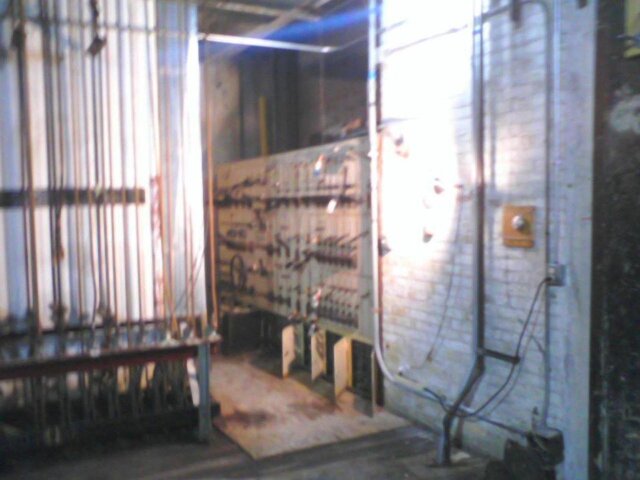You are correct (see how advantageous it is to have others proofread one's wiki entries?), that should have read "the load had to be within 20% of the rating", (thus 80%); quote and article edited....20% number has to be an error as the light would be on quite a bit!...
You've reminded me of something: On some models, at the low end the last contact would switch off the circuit, thus the "jump" ("non-bink dimming" option of the Cyberlight) would be from zero to 1%, not unlike some lesser-quality LED fixtures of today.
From Lighting the Stage, Art and Practice, Bellman, pp174-175:
Poor Willard's slide rule must have been low on battery when he wrote that! Since all his further calculations of resistance are based on the erroneous values, I won't continue quoting, but his point is that it takes four times the resistance to dim a lamp to zero.How the Resistance Dimmer Works
The resistance dimmer operates by gradually inserting additional resistance into the lamp circuit until current flow is reduced sufficiently. Since the remaining current is still flowing through both the dimmer and the lamp, both still heat up. The dimmer heats the most because it has the largest share of the resistance. Heat will be generated according to the heat formula.
At intermediate points between full on and blackout, the resistance wire in the dimmer will be asked to carry larger amperages, although over less resistance. Since the heat will vary by the square of the amperage, these large amperages will produce still larger quantities of heat. Thus resistance dimmers get hotter at intermediate points than they do at blackout. Moreover, many good resistance dimmers have a flipper switch at the low reading point that cuts off the remaining current completely.
Load Sensitivity
All resistance dimmers are load sensitive because of the inescapable mathematics of resistance circuitry. The "four times the resistance of the lamp" ration can be satisfied for any given lamp load with only one dimmer size. For example, a 1000-watt lamp draws 9.33 amperes at 120 volts: W/V=A or 1000/120=9.33 ...
Last edited:




